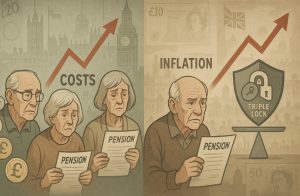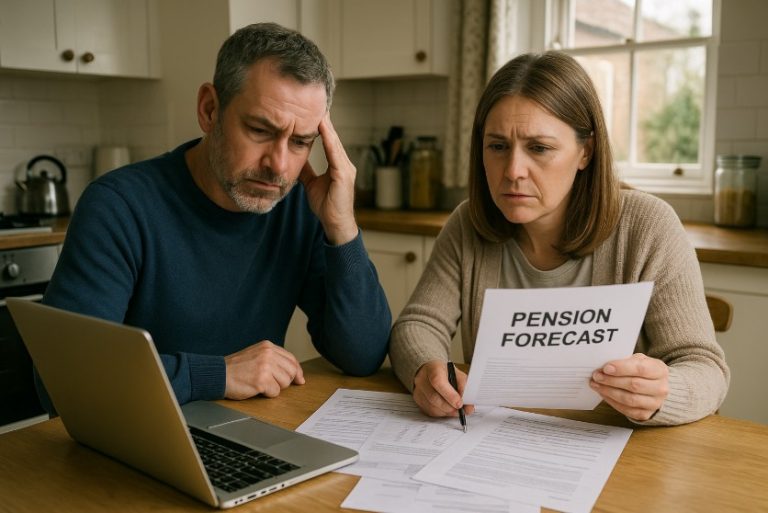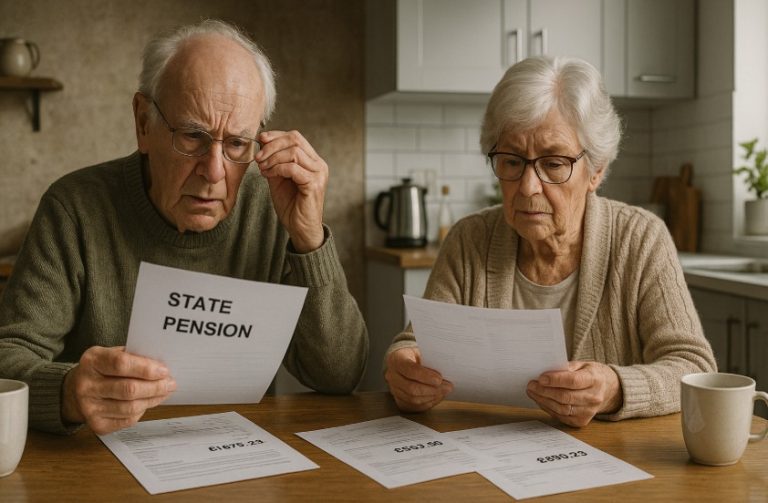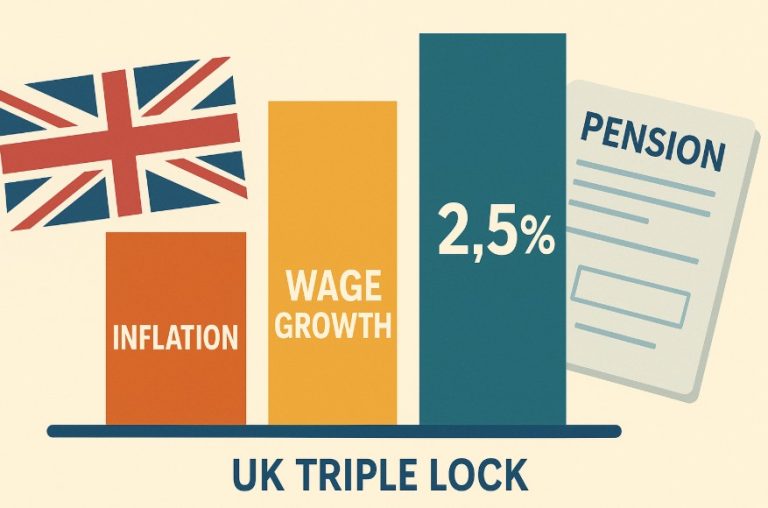The introduction of the new State Pension in April 2016 was intended to simplify retirement income and ensure fairness across future generations.
However, for many pensioners who retired before this cut-off date, the reform has introduced a sense of inequality.
The creation of a two-tier pension system has led to widespread concern that the new State Pension is unfair to existing pensioners.
Why Do Existing Pensioners Feel the New State Pension Is Unfair?

The core of the dissatisfaction among existing pensioners lies in the disparity in pension amounts. The new State Pension, introduced for those reaching retirement age on or after 6 April 2016, offers a simplified, flat-rate system that is generally more generous than the old one.
Under the old system, pensioners received a basic State Pension, currently around £156.20 per week, and could potentially receive an Additional State Pension. However, not everyone qualified for the full additional amount, especially those who were contracted out of SERPS or S2P during their working life.
In contrast, those eligible for the new State Pension can receive up to £221.20 per week in 2024–2025.
This clear gap in weekly income leads many pre-2016 retirees to feel disadvantaged. Two individuals with similar work and contribution histories might end up with significantly different pension amounts solely based on when they reached state pension age.
Key reasons behind this perception include:
- Lack of catch-up or compensation for those close to retirement in 2016
- No automatic inclusion of existing pensioners into the new system
- Perceived injustice despite similar or equal National Insurance contributions
The cut-off date feels arbitrary to many and creates a divide between older and newer pensioners who may have both worked under similar economic and social conditions.
How Has Contracting Out Affected the Fairness of the State Pension?
The issue of contracting out is central to understanding why many existing pensioners feel disadvantaged by the current two-tier system.
penBefore 2016, millions of employees were enrolled in workplace or public sector pensions that allowed them to opt out of the State Earnings-Related Pension Scheme (SERPS) or the State Second Pension (S2P). This arrangement had lasting consequences for State Pension entitlements.
The Mechanism of Contracting Out
Contracting out allowed both employees and employers to pay reduced National Insurance contributions in exchange for relying on a workplace pension scheme rather than the Additional State Pension.
At the time, this was promoted as a beneficial option for long-term retirement planning. However, many did not fully understand how this decision would affect their eventual State Pension.
In practice, individuals who were contracted out ended up with a deduction in their State Pension entitlement. This deduction is still applied when calculating pensions under the old system, significantly reducing overall retirement income.
Comparison of Outcomes Between Systems
In the new system introduced in 2016, contracting out no longer applies. Everyone is assessed based solely on their National Insurance record, regardless of their history with occupational schemes.
This has led to a sense of unfairness for those who retired earlier, as they continue to face the consequences of a policy that is no longer in effect for newer pensioners.
| Feature | Old System (Pre-2016) | New System (Post-2016) |
| Contracting Out Penalty | Yes, reduces the Additional State Pension | No penalty under the new flat-rate |
| Clarity of Entitlement | Often complex and unclear | Simpler and more transparent |
| Maximum Weekly Pension (2024) | Approx. £156.20 + potential additions | £221.20 if full contributions |
Impact on Public Sector and Private Sector Workers

Public sector workers were particularly affected, as many large public pension schemes automatically contracted members out. Teachers, nurses, civil servants and other government employees now find that their full years of contribution do not translate into full State Pension payments.
Similarly, employees in private sector defined benefit pension schemes were often contracted out by their employers without being fully informed of the long-term implications.
Many of these pensioners are now receiving significantly lower pensions than individuals who were never contracted out and who qualify under the post-2016 system.
Ongoing Consequences for Retired Workers
The primary consequence of contracting out is a lower pension entitlement, with no straightforward path to redress.
Affected pensioners are unable to reverse the decision or increase their State Pension unless they have not yet reached the full 35 qualifying years and are able to make voluntary contributions.
Many individuals argue that they were never clearly informed about the effect of contracting out, and that they should not be penalised in retirement for decisions made decades earlier, often without their full understanding or consent.
What Role Does Government Communication Play in Pension Confusion?
A significant number of pensioners continue to express frustration over the lack of clear and consistent communication from the government regarding the transition to the new State Pension system.
Despite official publications and online tools, many feel they were left without the knowledge needed to understand or plan for changes that directly affected their income in retirement.
Limitations of Official Guidance and Tools
Although the Department for Work and Pensions (DWP) has made information about State Pension rules publicly available, the guidance often uses technical language that is difficult for the average person to understand.
Moreover, online calculators and projection tools have not always clearly accounted for contracted-out deductions or detailed individual entitlements under transitional arrangements.
Printed communications were limited and not widely distributed, especially to those who were already approaching retirement before the 2016 reform. As a result, many individuals did not realise they were on course to receive less than the full amount available under the new system.
Confusion Around Contracting Out and Pension Forecasts
One of the most confusing aspects for pensioners has been understanding how contracting out would affect their forecasted and actual pension amounts.
Some believed they were eligible for the new full State Pension, only to discover that deductions significantly reduced their payments. Others were unaware that their workplace pension participation would result in lower state payments.
This misunderstanding was further compounded by vague or overly technical statements in official documents, which did not clearly differentiate between Basic State Pension, Additional State Pension, and deductions applied for contracting out.
Missed Opportunities for Effective Communication
The transition to the new State Pension was a pivotal moment in UK pension policy, yet many feel the government failed to treat it as such.
Public awareness campaigns were minimal, and personalised guidance was rarely provided unless specifically requested. Those without internet access or familiarity with digital tools were particularly disadvantaged.
Pensioners who retired just before the cut-off date often say they were unaware that the new rules were coming into effect. Had they been better informed, some might have made different retirement decisions or taken steps to increase their qualifying years.
Lingering Uncertainty and Trust Issues
Even years after the reform, confusion remains. Pensioners continue to express doubt over whether their pension was calculated correctly or if they’re missing out on entitlements.
Many feel they are being kept in the dark, especially in cases where deductions are applied without clear explanations. This lack of transparency has not only created uncertainty but has also undermined trust in the DWP and the broader pension system.
Pensioners who feel misled or uninformed are more likely to view the reform as unfair and discriminatory, reinforcing the perception of being left behind by government policy.
Are Pre-2016 Pensioners Being Treated as Second-Class Citizens?

The emotional and social impact of the pension disparity cannot be overlooked. Many pre-2016 retirees feel that they are being treated as second-class citizens in a system they helped fund. The feeling stems not just from financial differences but from a broader perception of exclusion.
While newer pensioners benefit from a cleaner, more generous model, older pensioners must navigate a complex system where their benefits vary widely based on historical decisions and changing rules.
This perceived inequality is especially prominent in discussions on social media and petition platforms, where affected pensioners share their experiences.
Campaigns like those on 38 Degrees highlight the growing frustration, with thousands supporting calls to extend the benefits of the new system to all pensioners. For many, the core of the issue is not just financial disparity but the feeling of being forgotten or sidelined by government policy decisions.
Does the New Pension System Penalise Those Who Contributed Equally?
The premise of a fair pension system is that individuals who make similar contributions over their working life should receive similar benefits in retirement. However, this principle does not appear to hold under the current two-tier system.
Under the old State Pension, entitlements were shaped not only by the number of qualifying years but also by earnings, contracting out, and the specific structure of the Additional State Pension.
This created wide variability in outcomes, even among people with identical career lengths.
In contrast, the new State Pension calculates payments more uniformly. Those with 35 qualifying years are eligible for the full pension regardless of how much they earned or whether they had periods of low income.
This results in some pensioners receiving:
- Up to £65 per week less, despite similar National Insurance records
- Limited or no access to transitional protections offered post-2016
- Reduced financial security in retirement due to outdated rules
The inconsistency undermines public confidence in the system and raises important questions about fairness, particularly for those who feel they have fulfilled all required contributions.
How Are Inflation and the Triple Lock Policy Affecting Older Pensions?

The triple lock policy was introduced to ensure that State Pension payments rise in line with the cost of living. While this policy has been applied consistently since 2010, its benefits are not felt equally across all pensioners.
For those on the new State Pension, the full amount is subject to triple lock protection. However, for many older pensioners, particularly those who were contracted out or receive a mix of Basic and Additional State Pensions, only certain portions of their income are fully indexed.
This means that:
- Additional State Pension components may not rise with inflation
- Contracted-out deductions remain fixed and reduce the base pension
- Real-term income can decline even when the triple lock is applied
Example Comparison: Triple Lock Impact
| Pension Type | Triple Lock Applied Fully? | Risk of Income Erosion |
| New State Pension | Yes | Low |
| Basic State Pension + SERPS | Partially | Medium to High |
| Contracted-Out Pensioners | No on deductions | High |
These differences matter more during periods of high inflation, when the value of fixed or partially-indexed pensions is effectively reduced. For many older pensioners, this means their weekly payments do not keep up with rising living costs, making daily expenses more difficult to manage.
Can the State Pension System Be Made Fairer for All Generations?
Addressing the current imbalance would require government intervention, either through transitional compensation or a redesign of the rules affecting pre-2016 pensioners.
While the DWP maintains that the new system is fairer for future generations, it has yet to adequately respond to the perceived injustice for those excluded.
Several proposals have been suggested:
- Introduce a top-up scheme or equalisation payment for pre-2016 pensioners
- Apply the full triple lock to all components of State Pension
- Allow limited migration to the new State Pension for those within a specific contribution window
While politically and financially complex, such changes would go a long way in rebuilding trust and ensuring that those who contributed under older systems are not unfairly left behind.
Until then, the gap remains a source of concern, and many pensioners continue to advocate for a more inclusive and equitable approach.
Conclusion
The State Pension system in the UK has undergone significant reform, but not without controversy. For many who retired before April 6, 2016, the changes have created a deep sense of unfairness.
Despite contributing to the system for decades, these individuals often receive less than their newer counterparts due to differences in structure, communication gaps, and the legacy of contracting out.
While the government maintains that the new State Pension is fairer and simpler, the concerns of existing pensioners continue to grow.
Addressing these disparities and ensuring that past contributions are recognised appropriately will be essential to restoring trust in the system and delivering a fair retirement for all.
Frequently Asked Questions (FAQs)
What is the difference between the old and new State Pension systems?
The old system combines a basic pension with Additional State Pension elements, which varied based on earnings and contracting out. The new system provides a flat-rate pension based solely on National Insurance contributions.
Why are pre-2016 pensioners not moved to the new State Pension automatically?
The new system applies only to those reaching pension age on or after 6 April 2016. The government chose this date to simplify implementation but left older retirees on the previous scheme.
How does contracting out reduce someone’s State Pension?
Contracting out allowed workers to pay lower National Insurance in exchange for relying on workplace pensions instead of the State Second Pension. This often reduced their entitlement under the old system.
Are women more affected by the pension inequality?
Yes, especially women born in the 1950s. Many were not informed of changes to the state pension age and are also affected by contracting out, leaving them with smaller pensions than expected.
Can pensioners appeal or challenge their pension amount?
Pensioners can contact the DWP to request a breakdown or file complaints. In some cases, appeals can be made through independent tribunals or the Parliamentary Ombudsman.
What does the triple lock actually guarantee?
The triple lock ensures annual pension increases by the highest of inflation, average wage growth, or 2.5%, helping protect pensions against rising costs, though it applies differently to older pensions.
Is there any political movement to change the system?
Several campaigns and parliamentary debates have called for reform, including petitions demanding fairer treatment for existing pensioners and reviews of the current two-tier system.
Related Articles:






